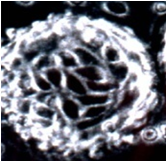Acknowledgments
3.5.19.
Experimental biology is a far more difficult research field than biochemistry, which in turn is somewhat more difficult than chemistry. Therefore, cellular assays would have been impossible for us chemists to carry out, without expert guidance and material assistance from our colleagues skilled in arts far beyond our reach. We therefore wish to express our gratitude to:
Bruce Carter, N. Jenkins, B. Monroe and L. Bestow from ZymoGenetics
Seattle, Washington
Michael Manion and David Hockenbery, from Fred Hutchinson Cancer
Research Center, Seattle, Washington
Peter Rabinovitch, Nancy Linford and Judy Anderson, from the Medical
School of University of Washington, Seattle
The financial support of our cellular research was provided by the National Institutes of Health, Grant RO1 GM 45260
For the reader, this Acknowledgment is also meant as a friendly warning.
It is futile even to contemplate doing any work with live cells without assistance of expert biologists for advice, and without access to a professionally managed facility that can provide well-defined cell cultures. While well-defined, stable inorganic and organic compounds can easily be obtained, and while the majority of commercial biochemicals is almost as reliably to obtain in a well defined form, cellular materials and their handling comprise an entirely different “kettle of fish.” The ability of microfluidic technology to handle small volumes leads many to exploit this technique for handling of cellular materials. Unfortunately, lack of biological insight makes some of such work meaningless.










